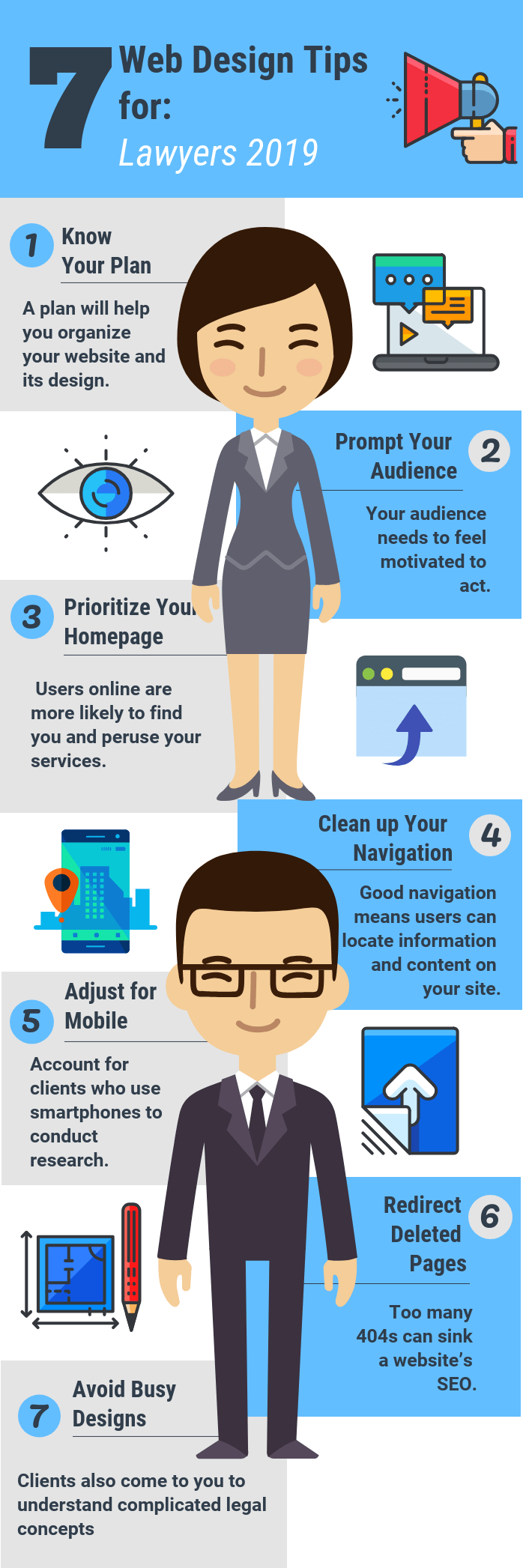A digital marketing strategy is the path to profitability. Optimum7 can help you set the right goals, offer and implement creative and technical strategies, and use data and analytics to review and improve your business’s performance.
A website is like a storefront for businesses on the Internet. The pages detail the products and services offered, as well as important contact information. In the case of lawyers, a great website can also allow local clients to locate them, get in contact more efficiently, and leave with positive feedback for other plaintiffs or defendants.
A lawyer first and foremost needs a client’s trust before they can do business. They also need to prove they are more trustworthy than their competitors; in addition to established partners at firms, thousands of lawyers pass the bar exam each year and enter the workforce.

You want a website that conveys that you can help clients with your law specialty. The website must be up-to-date, easy to navigate, and clear in conveying information.
Our web design services include:
…and more. You can take several steps to allow for updating, navigation, and clarity:
Speak to an ExpertA reliable web presence indicates that a firm is trustworthy because it allows a client to do research and demonstrates transparency.
Multiple fields of law exist, and each specialty has differing rules and policies. When a client seeks legal help, one size lawyer does not fit all, though the overlap between fields does exist. If someone wanted to evaluate a tenant contract to get their deposit back, as one example,
Lawyers can use the web to establish trust, their specialties, and skills for various fields. For lawyers, a website can also make an impression on potential clients, who are seeking outlaw practices. At Optimum7, we have experience at refining that first impression.
Average Increase in Website Traffic
+97%Average Increase in Conversion Rate
+52%Monthly Total Leads Generated
3,000+We become an indispensable resource for our clients to drive traffic and leads.

 1. Know Your Plan
1. Know Your PlanA disorganized website means that a potential client cannot find the information they need. If they cannot find the information, they cannot trust you. A plan will help you organize your website and its design.
You want to make a professional website that conveys relevant information about your law practices. Every facet of your website has to convey that image of professionalism and trust; while it may amuse some clients that your logo is a cartoon shark with a briefcase, complete with Comic Sans font, other clients may worry about the firm’s sense of humor contrasting with good intentions. A simple logo with serif font will convince users that your firm means business and can provide help.
Having a plan also reduces startup costs in designing a site; graphic and web designers may charge per revision of pages, logos, and visual content. If you know what you want from the start, then you can help your web developers reach that vision sooner rather than later, and reduce the costs associated with redesigns.
Your audience needs to feel motivated to act. They must take a call to action or a measurable action that the consumer can take in relation to your product, so as to keep going through your site and viewing every page for information.
In the case of potential law clients, you want them to reach out to you about their concerns, and why they may want your services. An accessible submission form can help with that. A call to action may include subscribing to the website’s blog on law expertise.
A lawyer’s homepage, the hub and first page that users see, need to make a first good impression. Users want to know that a lawyer will help them with a case or a contract and that they are making a worthwhile investment of their time.
An optimized webpage will also rank better for SEO, which means that search engines are more likely to rank your firm’s website higher. As a result, users online are more likely to find you and peruse your services. If you are paying for pay-per-click ads (PPC), a better-formatted home page can lead to more reasonable bidding prices for said ads and improve your budget.
Make sure that your font is consistent, that you have a clear message, and that you specify your law specialty and what your firm can offer to clients. Reinforce that you are trustworthy, with client testimonials.
Good navigation means users can locate information and content on your site. They are more likely to stay and explore your web pages if your menu buttons are concise, clear, and consistent. Efficient location means clear communication and happy clients.
Make sure your menus are simple, and your lists are properly formatted.
Smartphones allow people to search for information rapidly, all within their palms. A website, therefore, must account for mobile traffic and clients who use smartphones to conduct research. This means having images with low DPI, text at a certain size to prove legible, and responsive content that can adjust for screen size.
When you delete a page, it creates a 404 error. Everyone scrutinizes the 404 error page and what it means. They especially dislike a 404 error page when they need particular information and a website seems to have many. Too many 404s can sink a website’s SEO, which in turn reduces their ability to find your website.
Use 301 redirects so that if a client clicks on a page that you deleted, they will instead land on an updated replacement page.
Graphic design is your friend, especially on the Internet. You want to incorporate the value of negative space — in this case, negative space does not refer to a negative term or association, but the blank white space between images. A “busy” design fills the page with text and images, which doesn’t allow the user to breathe on seeing it.
Clients come to you because they want lawyers to resolve complicated disputes either on the contact page or in court. In addition to a busy website’s impracticality, they will leave the page believing that you cannot simplify nuanced terms for them. Which leads to our last point of breaking up your paragraphs
Users prefer shorter, succinct paragraphs. If they want to read giant blocks of text, they can sign up for a JSTOR account and download historical documents. Clients also come to you to understand complicated legal concepts and how you can assist with them. Clarity is key.
Identify what information you can break up into smaller paragraphs. Simplify terms if possible, and create shorter sentences. Identify the rhythm. Add some variety to sentence length. It interests readers. You want interested users.
A digital marketing strategy is the path to profitability. Optimum7 can help you set the right goals, offer and implement creative and technical strategies, and use data and analytics to review and improve your business’s performance.